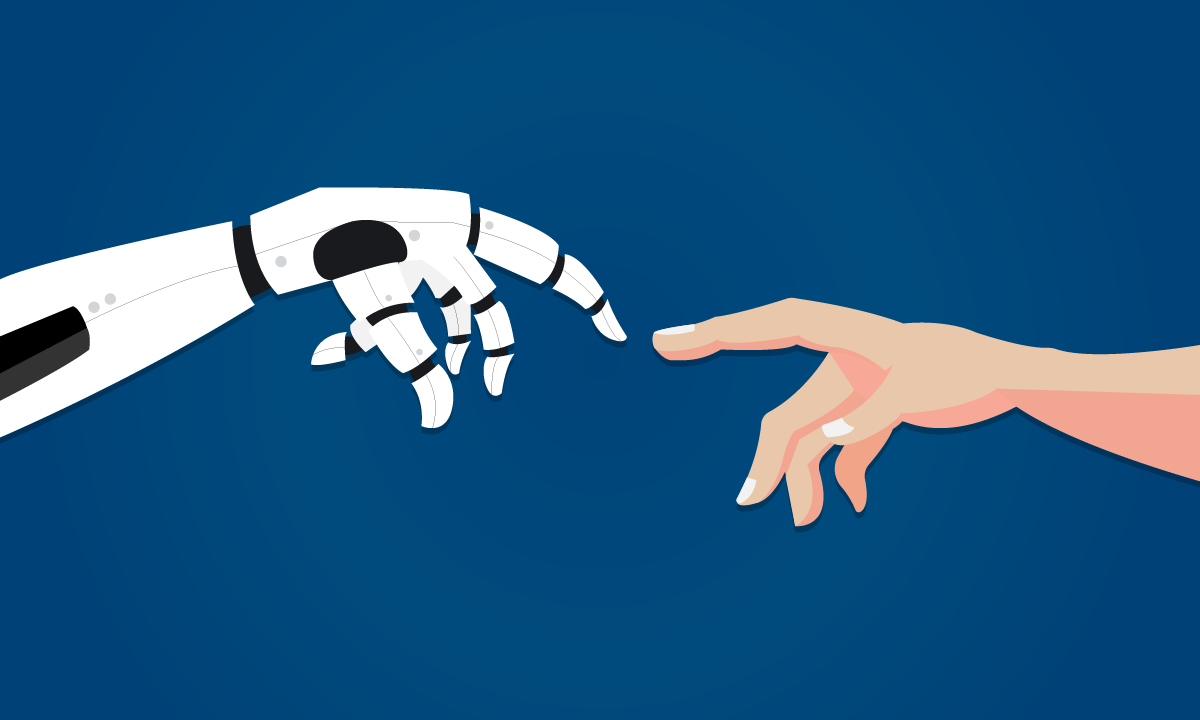The human-bot tango: who leads, who follows?
Published on 4th Aug 2017
Category: Artificial Intelligence
On my visit to the Chatbot Summit in Berlin this year, I heard several speakers proclaim that by 2020/2030 a whopping 80% of the service industry will be managed by robots. A report published by the World Economic Forum in April 2017 suggests that robotic automation will eliminate 5m jobs across more than a dozen developed nations by 2020, leaving us with the immediate question who will dominate the technological tug of war.

Chatbots: the new service assistants
Human or bot?
Conversational design is a hot topic among app designers and contact centre experts who deploy robots to reach a larger audience through automated dialogues. While the majority of chat-assisted websites are currently managed by humans, the ongoing trend goes towards digital customer experiences that are handled by robots.
Tech supplier LivePerson has recently launched a platform that monitors dialogues managed by humans and bots alike. Originally focusing on bots for customers only, LivePerson have shifted their focus on reinforcing their human workforce through third-party bots. While robots have a long way to go to match humans in their proficiency of grasping and handling emotional dialogues, Artificial Intelligence (AI) provides them with increasing autonomy to do so. Ultimately it is just a question of time when machines are able to respond to the complexities of customer service in an intelligent, reliable way.
Blessing or burden?
Robots have assisted humans with manual work for decades. Concerns about machines reducing the need for human skills, however, are as present as ever. The extensive shift towards automation will not only affect jobs but jeopardise millions of livelihoods:
garment workers in countries like Cambodia, Indonesia, and the Philippines face the risk of displacement. Robots may not be able to sustain themselves yet, leading to a rise in the number of skilled jobs in STEM fields. But in the long run the amount of jobs replaced by robotic automation will grow, leaving our workforce in an unstable condition. Not only skilled labour in the manufacturing industry is affected by the devastating effects of rapid machine automation. The service industry is another example of how machines may eventually displace human skills in the long run. Is it just a matter of time until machines take over in the workplace?

Robots have gone well beyond the assembly line
Great service, great responsibility
The above question is certainly not new – Aldous Huxley, Philip K. Dick and Charlie Chaplin are just some of the many artists who have addressed the fear of an engineered future in which the human was enslaved by the machine. Long gone are the days where robots occupying service desks were a depiction of sci-fi novels: automated self-service stations at McDonald’s are no longer a novelty, and it is not until long that life-like robotic dolls could become companions for those in need of a friend. With robotics and AI enabling robots to communicate and respond to human emotions, as a society we will have to decide where human-like machines should operate and how we regulate them. While a robot with human features that responds like a human may be regarded as a means to break isolation, the question whether it is ethical to expose an Alzheimer’s patient to a machine they may not recognise is yet to be addressed. How do we distribute wealth created by machines? What does “humane” mean in the context of a machine? What are the societal consequences of vast unemployment triggered by machines? These are just a few questions of many we will need to address when discussing ethical issues in AI.

Are we aware of what we are creating?
What’s the solution?
While robots working side by side with humans in the workplace will certainly boost the global economic performance, the challenge to create enough relevant jobs will remain. On the societal side of things, lawmakers, robotics experts and the general public need to engage in a debate to discuss the advantages and disadvantages of recommending bots as a valuable solution to increase life quality. Education and training will be vital tools to empower the workforce, promote the public debate and create a clear framework to set out the ethical boundaries for the future integration of AI into our society.
Now that this interesting tango between man and machine is in full swing, we ought to cover this new ground asking the right questions. We have already asked “Do Androids Dream of Electric Sheep?”. Might the better question be: “Should they dream at all?”


